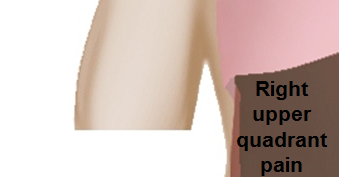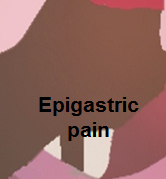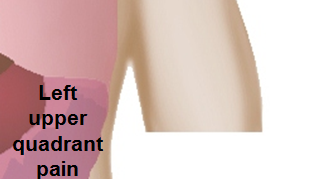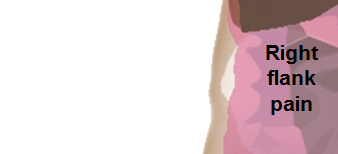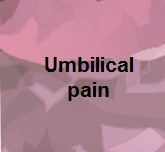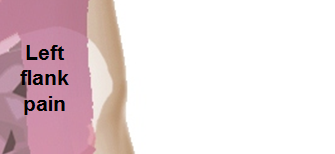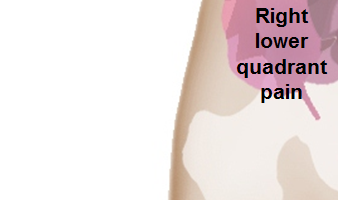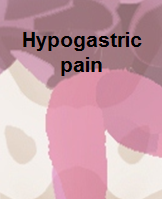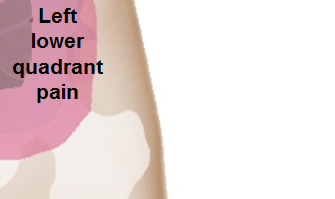Gallstone disease differential diagnosis
|
Gallstone disease Microchapters |
|
Diagnosis |
|---|
|
Treatment |
|
Surgery |
|
Case Studies |
|
Gallstone disease differential diagnosis On the Web |
|
American Roentgen Ray Society Images of Gallstone disease differential diagnosis |
|
Risk calculators and risk factors for Gallstone disease differential diagnosis |
Editor-In-Chief: C. Michael Gibson, M.S., M.D. [1]; Associate Editor(s)-in-Chief: Hadeel Maksoud M.D.[2]
Overview
Gallstone disease must be differentiated from other diseases that cause epigastric, and left and right hypochondriac pain (right upper quadrant) such as: Abdominal pain, esophageal chest pain,gastroesophageal reflux disorder, peptic ulcer disease, non-ulcer dyspepsia,hepatitis, functional gallbladder disorder, sphincter of Oddi dysfunction,appendicitis, bile duct stricture, chronic pancreatitis, irritable bowel syndrome, ischemic heart disease, pyelonephritis, ureteral calculi and complications of gallstone disease include: acute cholecystitis, choledocholithiasis, acute pancreatitis, and acute cholangitis.[1][2]
Differentiating Gallstone disease from other Diseases
As Gallstone disease manifests in a variety of clinical forms, differentiation must be established in accordance with the particular subtype. The presence of biliary colic is an important diagnostic feature to distinguish between gallstones and non-biliary disorders. It has been shown that this feature is predictive of finding stones on imaging. [3] However, it is important to note that biliary colic concomitant in patients with other biliary disorders such as acute cholecystitis, choledocholithiasis, sphincter of Oddi dysfunction, and functional gallbladder disorder.
Laboratory studies can be helpful, along side clinical presentation in making a preliminary diagnosis:
- Liver biochemical tests (serum aminotransferases, total bilirubin, alkaline phosphatase), which may be abnormal in patients with hepatitis, biliary tract obstruction, or (less commonly) acute cholecystitis
- Serum amylase and lipase, which are elevated in acute pancreatitis
- Complete blood count, which may show an elevated white blood cell count in patients with acute cholecystitis or acute cholangitis
- Urine analysis, which may show indicate a urinary tract infection or ureteral calculi[4]
Other tests that may be indicated depending upon the patient's symptoms and history including:
- Upper endoscopy to look for peptic ulcer disease
- Endoscopic ultrasonography to look for chronic pancreatitis
- Endoscopic retrograde cholangiopancreatography (ERCP) with sphincter of Oddi manometry to look for sphincter of Oddi dysfunction
- Cholescintigraphy with or without cholecystokinin (CCK)-stimulation to look for acute cholecystitis and functional gallbladder disorder, respectively
- Testing for ischemic heart disease
- Esophageal manometry to look for esophageal sources of chest pain, such as esophageal spasm[5][6]
To review a table of differential diagnoses for disease symptoms including jaundice, abdominal pain and fever, please click here:
Differential diagnosis
Abbreviations: RUQ= Right upper quadrant of the abdomen, LUQ= Left upper quadrant, LLQ= Left lower quadrant, RLQ= Right lower quadrant, LFT= Liver function test, SIRS= Systemic inflammatory response syndrome, ERCP= Endoscopic retrograde cholangiopancreatography, IV= Intravenous, N= Normal, AMA= Anti mitochondrial antibodies, LDH= Lactate dehydrogenase, GI= Gastrointestinal, CXR= Chest X ray, IgA= Immunoglobulin A, IgG= Immunoglobulin G, IgM= Immunoglobulin M, CT= Computed tomography, PMN= Polymorphonuclear cells, ESR= Erythrocyte sedimentation rate, CRP= C-reactive protein, TS= Transferrin saturation, SF= Serum Ferritin, SMA= Superior mesenteric artery, SMV= Superior mesenteric vein, ECG= Electrocardiogram
| ||||||||||||||||||||||||||||||||||||||||||||||||||||||||||||||||||||||||||||||||||||||||||||||||||||||||||||||||||||||||||||||||||||||||||||||||||||||||||||||||||||||||||||||||||||||||||||||||||||||||||||||||||||||||||||||||||||||||||||||||||||||||||||||||||||||||||||||||||||||||||||||||||||||||||||||||||||||||||||||||||||||||||||||||||||||||||||||||||||||||||||||||||||||||||||||||||||||||||||||||||||||||||||||||||||||||||||||||||||||||||||||||||||||||||||||||||||||||||||||||||||||||||||||||||||||||||||||||||||||||||||||||||||||||||||||||||||||||||||||||||||||||||||||||||||||||||||||||||||||||||||||||||||||||||||||||||||||||||||||||||||||||||||||||||||||||||||||||||||||||||||||||||||||||||||||||||||||||||||||||||||||||||||||||||||||||||||||||||||||||||||||||||||||||||
References
- ↑ Portincasa P, Moschetta A, Palasciano G (2006). "Cholesterol gallstone disease". Lancet. 368 (9531): 230–9. doi:10.1016/S0140-6736(06)69044-2. PMID 16844493.
- ↑ Center SA (2009). "Diseases of the gallbladder and biliary tree". Vet. Clin. North Am. Small Anim. Pract. 39 (3): 543–98. doi:10.1016/j.cvsm.2009.01.004. PMID 19524793.
- ↑ Kraag N, Thijs C, Knipschild P (1995). "Dyspepsia--how noisy are gallstones? A meta-analysis of epidemiologic studies of biliary pain, dyspeptic symptoms, and food intolerance". Scand. J. Gastroenterol. 30 (5): 411–21. PMID 7638565.
- ↑ Poupon R, Rosmorduc O, Boëlle PY, Chrétien Y, Corpechot C, Chazouillères O, Housset C, Barbu V (2013). "Genotype-phenotype relationships in the low-phospholipid-associated cholelithiasis syndrome: a study of 156 consecutive patients". Hepatology. 58 (3): 1105–10. doi:10.1002/hep.26424. PMID 23533021.
- ↑ Shaffer EA (2005). "Epidemiology and risk factors for gallstone disease: has the paradigm changed in the 21st century?". Curr Gastroenterol Rep. 7 (2): 132–40. PMID 15802102.
- ↑ Julliard O, Hauters P, Possoz J, Malvaux P, Landenne J, Gherardi D (2016). "Incisional hernia after single-incision laparoscopic cholecystectomy: incidence and predictive factors". Surg Endosc. 30 (10): 4539–43. doi:10.1007/s00464-016-4790-4. PMID 26895902.
